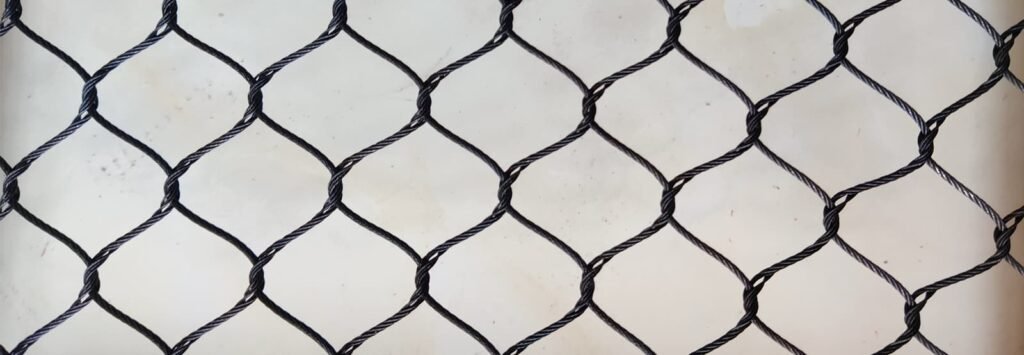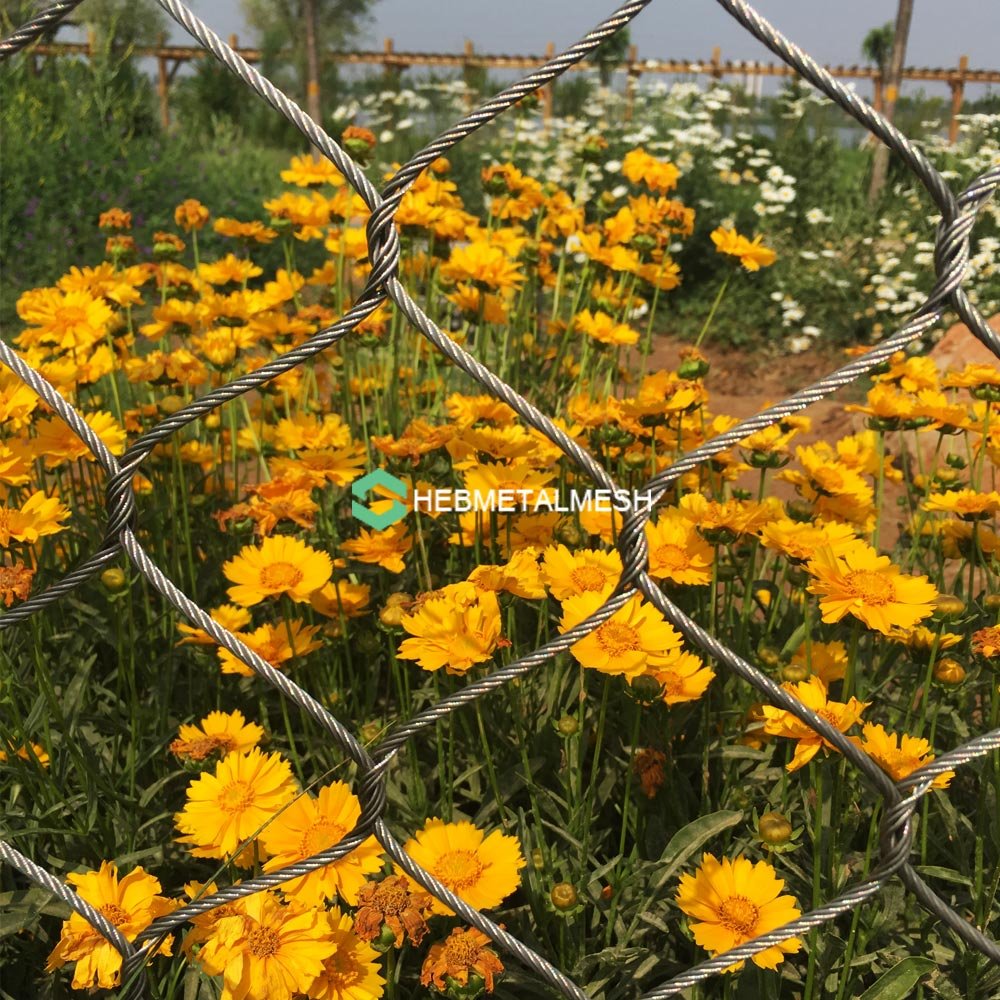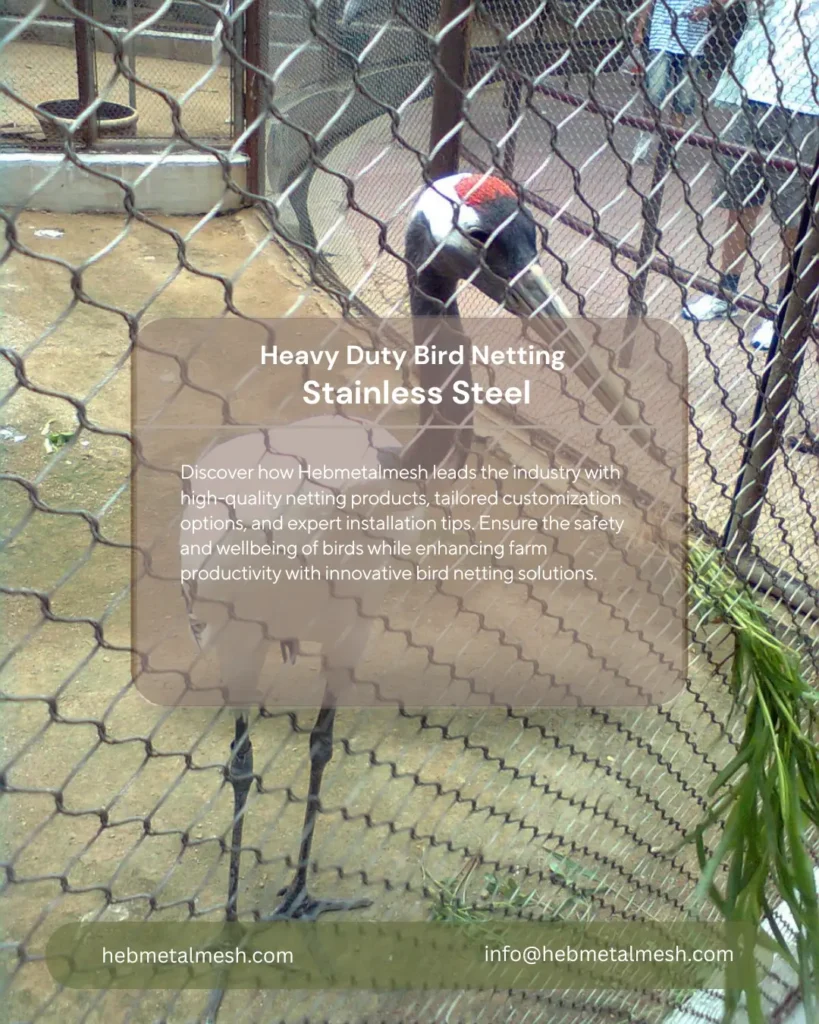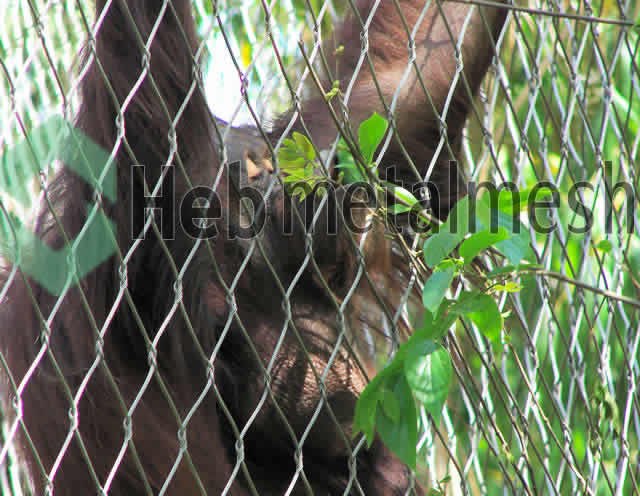In the modern professional landscape, the concept of “control” has evolved into a foundational principle that dictates success across seemingly unrelated disciplines. Whether managing the multi-billion-dollar construction of a new zoological park, designing a high-security perimeter for sensitive infrastructure, or even pioneering the next generation of visual media, the ability to enforce precision and maintain rigid boundaries is paramount. The term “control netting” embodies this principle, manifesting in two distinct but profoundly relevant domains: one resides in the ephemeral world of Artificial Intelligence, and the other is anchored firmly in the physical, real-world constraints of architecture, engineering, and animal management. This article delves into both manifestations of “control netting,” exploring how the pursuit of precision, reliability, and enforced boundaries serves as the vital common thread connecting digital creation to critical physical security. For professionals in zoning, architecture, high-end property management, and agriculture, understanding this dual concept illuminates the universal need for predictable, high-fidelity systems—be they algorithmic or structural.
The digital sphere’s rapid advancement has introduced us to tools that offer unprecedented creative control. In the same vein, the structural sphere demands materials that offer uncompromising physical control. As we explore the mechanisms that allow AI artists to dictate every pixel, we simultaneously lay the groundwork for a discussion on how premium materials, specifically Hebmetalmesh’s 304 stainless steel zoo mesh, enable engineers and architects to dictate every dimension of safety and security in the built environment. This journey will demonstrate that, regardless of the medium—a canvas of pixels or a perimeter of steel—mastery begins with the right tools for absolute control.
Part 1: ControlNet – The Digital Revolution in AI Image Generation
The first realm of “control netting” exists in the digital ether, within the framework of generative AI. The advent of powerful neural networks capable of translating text into photorealistic or artistic images was revolutionary, yet initially, it was a chaotic process. Users could describe a scene, but the final composition, perspective, and pose were left largely to chance—a problem for professionals who require consistency and adherence to pre-existing designs. The solution arrived in the form of ControlNet, a groundbreaking technology that redefined the concept of creative “control netting” in digital art.
What is ControlNet AI?
At its core, ControlNet is not a standalone image generator but rather a powerful, innovative neural network structure designed to grant users precise, conditional control over large pre-trained image diffusion models, such as Stable Diffusion. Before ControlNet, AI generation felt like shouting instructions into a creative void; the AI would return something related to the prompt, but the user had no way to guide the structure of the resulting image.
ControlNet changed this by allowing the user to impose external, structural inputs onto the generative process. To use an effective analogy: imagine asking a master sculptor to carve a statue. Giving the sculptor a prompt like “a noble lion” might result in any number of poses and compositions. However, ControlNet is the equivalent of handing that sculptor a “skeleton” or a “pre-drawn blueprint” that dictates the exact posture, muscle tension, and angle of the finished piece. This skeletal framework—the ControlNet model—allows the original, powerful image generator to retain its creative ability while being constrained to the user’s explicit structural requirements. The result is a fusion of AI creativity and human design precision, making it an indispensable tool for professionals who need to maintain brand consistency, architectural fidelity, or narrative structure across visual assets.
How Does ControlNet Work?
ControlNet operates by taking two separate inputs: the standard text prompt (e.g., “a modern minimalist structure against a sunset backdrop”) and a conditional input—the “control signal.” This control signal is a processed image that defines the structural constraints the final output must adhere to.
The process involves locking the weights of the large pre-trained generative model (Stable Diffusion) to preserve its knowledge base, while simultaneously creating a “trainable copy” of the weights. This copy is then integrated with the control signal, which can take various forms:
- Canny Edges: A filtered input image that isolates only the strong, defined edges. The AI must structure its output based precisely on these lines, ensuring architectural massing or complex compositions are maintained.
- Depth Maps: A map that uses grayscale values to represent distance. This allows the user to dictate the perspective and three-dimensional layout of the scene with photogrammetric accuracy—crucial for architects and interior designers validating spatial concepts.
- Human Poses (OpenPose): A system that identifies and maps the skeletal structure of human figures in an image. This ensures specific, complex poses are replicated perfectly, essential for storyboard artists or fashion designers.
- Scribbles/Segmentation Maps: Crude drawings or color-coded maps that define the basic areas and content (e.g., “this area must be water, this area must be sky”).
By introducing these non-destructive conditional inputs, ControlNet acts like a master artist’s assistant. It doesn’t tell the generative model what to paint, but where to paint it and how to compose the elements. This dual input system fundamentally addresses the issue of stochastic randomness that plagued earlier AI models, replacing it with deterministic reliability—the very same reliability that professionals demand from their physical structural materials.
Why is ControlNet a Game-Changer?
For high-level creative and design professionals, ControlNet offers capabilities that were previously unattainable:
- Unprecedented Precision and Consistency: Architects can now visualize concept models from complex CAD drawings, ensuring the AI-generated rendering perfectly matches the wireframe blueprint. This eliminates hours of manual rendering setup.
- Rapid Iteration and Storyboarding: Filmmakers and commercial designers can quickly generate an entire sequence of images that maintain the exact same composition, character position, or camera angle, dramatically accelerating pre-production timelines.
- Style Transfer with Structural Integrity: Designers can apply the aesthetic of one image (e.g., a specific painter’s brushstroke) to the composition of another (e.g., a photograph of a building), maintaining structural integrity while transforming the visual style.
- IP Protection and Control: By controlling the input, firms can better ensure that the output adheres to internal design guidelines and avoids unpredictable, copyrighted elements that might be accidentally introduced by unconstrained AI models.
In essence, ControlNet empowers the user to move beyond simply prompting the AI to directing it. It is a system built on the philosophy that true value comes from the ability to reliably enforce a desired outcome, transforming a whimsical generative tool into a precise, professional instrument.
Bridging the Gap: The Universal Need for Control
The lessons learned from ControlNet’s digital success—that reliable control and adherence to a defined framework are essential for professional outcomes—apply directly to the physical world of construction, security, and animal management. Just as ControlNet provides the rigorous framework for precision in the digital world, physical control netting provides the essential, robust framework for safety, security, and effective management in our built environment.
The transition from controlling pixels to controlling thousands of pounds of animal weight, or securing acres of high-value agricultural land, requires a similar dedication to uncompromising quality. In this context, the term “control netting” shifts from a neural network structure to a material solution: a category of superior mesh products engineered for absolute containment and exclusion. This is where the digital analogy ends and the rigorous reality of engineering and material science takes precedence. The next part of our guide shifts focus from controlling the composition of an image to controlling real-world spaces, where structural failure is not a visual glitch, but a severe liability and safety hazard.
Part 2: Physical Control Netting – The Ultimate Guide to Safety and Security
Physical control netting is the unsung hero of many modern architectural and zoological projects. It represents the highest standard in perimeter and interior containment. Unlike general fencing or barriers, control netting must satisfy multiple complex, and often competing, professional demands: it must be high-strength, flexible, corrosion-proof, durable, and, crucially for modern enclosures, aesthetically non-obtrusive.
What is Physical Control Netting? (Beyond Basic Bird Netting)
For professionals in zoning, architecture, and large-scale management, it is critical to differentiate physical control netting from common, flimsy alternatives. Physical control netting is defined as a specialized category of woven or welded mesh products explicitly engineered for long-term animal containment, structural reinforcement, and rigorous perimeter security.
The marketplace is flooded with temporary, low-cost solutions, often made of nylon, polyethylene, or thin, galvanized wire. These are best described as temporary exclusion barriers, suitable for consumer-grade applications like seasonal garden pest deterrence or basic, short-term bird netting. They are characterized by low tensile strength, susceptibility to UV degradation, chemical erosion, and rapid failure due to chewing or clawing.
Heavy-duty, permanent control netting, however, is in a class entirely its own. It is an investment-grade material, designed for multi-decade service life with minimal maintenance. This is why material choice is paramount: the move from basic steel or plastic to materials like 304 or 316 grade stainless steel is the defining characteristic of professional-grade control netting. Architects and project managers choose these materials because they are building safety and security infrastructure, not merely temporary fences. The structure must be flexible enough to conform to complex, organic designs—a hallmark of modern zoological and aviary architecture—yet strong enough to withstand significant dynamic loads and constant environmental pressure. The investment in superior material is a direct, measurable investment in liability mitigation and long-term asset value.
Key Applications for Heavy-Duty Control Netting
The versatility and high performance of premium stainless steel mesh make it the material of choice across four primary professional sectors.
Zoo and Animal Enclosures: The Highest Standard
The safety requirements for contemporary zoological exhibits are arguably the most demanding in the industry, requiring the highest standard for both animal welfare and human safety. An enclosure failure is catastrophic, making material selection a decision of liability, ethics, and public trust.
The mesh must function as an invisible boundary, providing an unobstructed view for guests while delivering uncompromising security. The core requirements for zoo mesh include:
- Non-Toxicity and Inertness: The material must not rust, leach chemicals, or degrade in a manner that could harm the contained species.
- High Tensile and Impact Strength: It must withstand the dynamic force of climbing, jumping, and running animals, from large primates to felids.
- Chewing and Clawing Resistance: The mesh structure must be highly resilient to persistent physical manipulation.
- Clear Visibility: The weave must be thin and precise enough to create an “invisible wall” effect, enhancing the guest experience.
This is the specialty of Hebmetalmesh. Our 304 Stainless Steel Zoo Mesh is engineered specifically for these demanding environments. Using a custom weaving process, the mesh delivers extreme flexibility to contour to innovative architectural designs—such as tensioned domes and vertical habitat faces—while maintaining the load-bearing capacity required by professional engineering standards. By choosing 304 SS, clients receive a product that meets global safety codes and provides a significantly improved return on investment (ROI) compared to lesser materials that require frequent replacement or repair.
Aviaries and Bird Sanctuaries: Corrosion and Scale
Managing aviaries, especially those housing exotic species or located in tropical or coastal environments, presents a unique challenge primarily related to corrosion resistance. Bird waste, high humidity, and, in some cases, proximity to saline air, can rapidly degrade conventional materials.
Aviary control netting needs to be:
- Totally Corrosion Resistant: To prevent rust that can compromise structural integrity and aesthetic appearance.
- Small Aperture Size: To effectively contain even the smallest species while protecting against predatory birds from outside.
- Highly Flexible for Complex Geometries: Many modern aviaries are designed as vast, complex dome or tension structures, requiring mesh that can be installed under high tension across non-linear frameworks.
For these major projects, the logistics of installation are as crucial as the material science. This is why Hebmetalmesh offers standardized, generous 30′ x 60′ roll sizes. This large dimension minimizes the number of seams and joins required for vast aviary projects, thereby accelerating installation time, reducing material waste, and enhancing the overall structural integrity of the final enclosure. It’s a specification tailored to the scale requirements of professional-grade bird sanctuaries and multi-acre habitat construction.
Agricultural and Aquaculture Fencing: Pest and Containment Control
In the agricultural and aquaculture sectors, control netting functions as a critical asset protection measure. The primary goal is exclusion—keeping large, destructive pests out—or containment—securing valuable livestock or aquatic stock.
- Agricultural Exclusion: High-tensile stainless steel mesh provides an effective, permanent barrier against large pests like deer, wild boars, and coyotes that breach conventional wire fencing. The strength of 304 SS ensures the fencing remains intact after physical impact, protecting high-value crops or specialized orchards.
- Aquaculture Containment: In fish farming (aquaculture) operations, especially those utilizing offshore or large pond systems, stainless steel mesh is used for perimeter security to contain stock and protect against aquatic predators or theft. Its superior corrosion resistance is essential when submerged or exposed to treated water.
The long-term durability of a material like 304 SS is key for this sector, as agricultural installations are often remote and maintenance-intensive. A single installation of a premium mesh can replace years of costly repairs and crop losses associated with lower-grade fencing.
High-Security Perimeter Fencing: Industrial and Utility Protection
Beyond biological containment, control netting is increasingly adopted for high-security industrial applications, including:
- Utility Substation perimeters
- Airport security zones
- Sensitive data center compounds
- Industrial manufacturing sites
In these environments, the mesh’s function is purely preventative. The tight weave and high shear strength of Hebmetalmesh stainless steel make the fence difficult to cut, challenging to climb, and highly resistant to tampering. Unlike chain link or welded wire, the woven structure of zoo mesh provides a continuous, highly flexible barrier that does not snap under localized pressure, offering superior defense against unauthorized access. This level of physical deterrence is becoming standard requirement for compliance with federal and industry-specific security protocols.
Choosing the Right Control Netting: A Material and Specification Guide
Selecting the appropriate control netting requires a technical assessment of environmental factors, load requirements, and desired lifespan. For professional-grade projects, the decision invariably leads to stainless steel.
Why 304 Stainless Steel is the Gold Standard
For the vast majority of architectural, zoological, and high-security projects, 304 stainless steel provides the optimal balance of performance, longevity, and cost-effectiveness, securing its position as the professional gold standard.
- Corrosion Resistance: The defining feature of 304 SS is its chromium-nickel alloy content, which forms a passive, self-healing oxide layer on its surface. This layer provides exceptional resistance to rust and environmental corrosion, especially in outdoor, rain-exposed, and moderate humidity environments typical of zoos and large aviaries. It is drastically superior to standard galvanized steel, which relies on a sacrificial zinc coating that eventually wears away, exposing the underlying steel to rust. For project specifications where budget is balanced against multi-decade reliability, 304 SS is the superior, non-leaching choice.
- Strength and Durability (High Tensile): Stainless steel wire, particularly when custom-woven by a factory like Hebmetalmesh, achieves a high tensile strength capable of withstanding significant static and dynamic impact loads. This is not merely about surviving a single hit; it’s about maintaining long-term tension and structural integrity under constant pressure from animal movement, wind loading, and snow accumulation. Its longevity minimizes the total cost of ownership over the project’s lifespan.
- Safety and Non-Toxicity: Crucial for animal enclosures, 304 SS is an inert material. It will not leach harmful chemicals or rust particles into the habitat, a paramount consideration for ensuring animal welfare and regulatory compliance.
- Aesthetics: A well-woven stainless steel mesh provides a clean, professional, and ultimately non-obtrusive look. Modern architecture and zoological design prioritize visibility. The slim profile and precise tensioning of 304 SS wire create a near-transparent barrier that maximizes the viewing experience without sacrificing safety, thus enhancing the project’s overall aesthetic and commercial appeal.
Understanding Mesh Specifications
The performance of control netting is determined by two critical, interdependent measurements. Professionals must be precise when specifying these parameters to ensure compliance with zoning codes and animal containment requirements.

For clarity in professional procurement and technical documentation, these specifications should always be presented in a scannable format:
- Wire Gauge (Thickness): This refers to the diameter of the individual stainless steel wires used to construct the mesh.
- Unit: Typically measured in millimeters (mm) or, less commonly, in gauge numbers (where a lower gauge number indicates a thicker wire).
- Impact: A thicker gauge (e.g., 3.2 mm) offers superior strength for large, powerful animals (e.g., bears, large cats), while a finer gauge (e.g., 1.6 mm or 2.0 mm) is suitable for primate exhibits or aviaries where visibility is the highest priority.
- Mesh Aperture Size (Hole Size): This refers to the size of the open space in the mesh, measured from the center of one knot or cable intersection to the center of the next.
- Unit: Measured in inches or millimeters (e.g., 50mm x 50mm or 2 inches x 2 inches).
- Impact: Determines containment capability. For small birds, a 25mm aperture might be necessary. For large animals like deer or mountain goats, a 75mm or 100mm aperture provides the required strength while minimizing material cost.
- Roll Dimensions: The physical size in which the material is delivered.
- Standard Size: Hebmetalmesh offers generous, standard roll dimensions, such as the highly efficient 30′ x 60′ (9.14m x 18.29m).
- Impact: Large roll sizes are crucial for large-scale construction projects (aviaries, major perimeter fencing) as they minimize the need for splicing, reducing installation labor and potential weak points in the final structure.
| Suggested Bullet Point Table (for clarity) |
|---|
| Mesh Specification Guide |
| Wire Gauge (Thickness): Dictates shear strength and resilience against direct impact. Thicker wire (higher diameter) is required for high-load applications. |
| Mesh Aperture (Hole Size): Critical for containment (must be smaller than the smallest body part or head of the contained species). Also affects material weight and cost. |
| Weave Type: Crucial distinction—Woven mesh (like Hebmetalmesh) offers flexibility for curved structures; welded mesh is more rigid but suitable for flat, panelized applications. |
| Roll Dimensions: 30′ x 60′ rolls minimize labor and structural joins on large-scale projects, enhancing overall integrity. |
Why Choose Hebmetalmesh as Your Control Netting Partner?
For professionals who are sourcing materials for a high-value, long-term construction or containment project, the supplier is as critical as the specification. Choosing the right partner means ensuring quality control, optimal pricing, and customized service.
Hebmetalmesh (Shijiazhuang Netting Trading Co., Ltd.) is a dedicated factory source, offering significant advantages over relying on general distributors or third-party suppliers:
- Direct Factory Source (Shijiazhuang Netting Trading Co., Ltd.): By operating as a direct manufacturer, we eliminate unnecessary middlemen. This translates directly to competitive pricing—a significant advantage for large-scale government or private sector projects where procurement efficiency is key. More critically, it ensures end-to-end quality control (QC). Every step, from the sourcing of the 304 stainless steel raw material to the final weaving, tensioning, and cutting of the 30′ x 60′ roll, is managed under one roof, guaranteeing consistency and adherence to stated specifications.
- Focus on Premium Materials: Our specialization is not general fencing; it is premium metal mesh solutions. We focus almost exclusively on high-grade materials like 304 and 316 stainless steel. This specialization ensures that our expertise is concentrated on the corrosion resistance, high tensile strength, and complex weaving techniques required for professional-grade zoo, aviary, and high-security installations.
- Customization Capabilities and Project Support: While the 30′ x 60′ roll is our standard, highly efficient size for logistics and installation, we understand that unique architectural blueprints demand unique solutions. We work closely with architects and engineering firms on custom orders, including specialized panel sizes, varying aperture shapes, and different wire gauges to meet the exact load calculations and aesthetic requirements of complex projects worldwide. This collaborative approach ensures the material perfectly integrates into the final design.
- Global Expertise and Compliance: Hebmetalmesh has extensive experience in supplying projects for major zoological parks, government environmental agencies, and large agricultural firms across the globe. Our product is manufactured to meet international standards for material safety, environmental protection, and structural durability, giving professionals confidence in compliance regardless of the project’s jurisdiction.

Call-to-Action: The longevity and safety of your containment infrastructure are non-negotiable. Do not compromise project integrity by sourcing temporary solutions. Contact our experts at Hebmetalmesh today for a custom quote and technical consultation for your project. Let us demonstrate how a direct factory partnership can deliver superior 304 stainless steel mesh solutions tailored to your specific engineering and budgetary requirements.
Installation and Maintenance Tips for Stainless Steel Mesh
While the robust nature of 304 stainless steel mesh minimizes long-term maintenance, a successful, durable installation relies on professional adherence to handling and tensioning best practices.
- Handling and Cutting: Stainless steel is a resilient material, and proper tools are essential. Use high-quality, hardened steel cable cutters or hydraulic cutters specifically designed for stainless steel wire. Using incorrect tools can fray the edges, compromise the material integrity, or even injure installers. Always wear protective gloves and eyewear.
- Framework Preparation: The mesh is only as strong as its supporting framework. Ensure the perimeter structure (steel poles, concrete anchors, or wooden posts) is engineered to handle the high static and dynamic tension the stainless steel mesh will exert once properly installed. The framework must meet the maximum load calculation for the contained species or security level.
- Tensioning and Securing: The key to a non-obtrusive, highly secure installation is uniform tension. Woven mesh, like that from Hebmetalmesh, is designed to be pulled taut to its specification. Use stainless steel ferrule kits, swages, or high-tensile steel clamps to secure the mesh to the supporting cables or framework. Avoid sharp bends or kinks in the mesh, as these create stress points that compromise the tensile strength. The use of large rolls (like the 30′ x 60′ size) simplifies this process by reducing the number of splices that require tensioning.
- Low-Maintenance Benefit: One of the most significant professional advantages of specifying 304 stainless steel is its low-maintenance profile. Unlike galvanized or painted materials that require regular inspection for peeling, flaking, or rust spots, 304 SS typically requires only occasional rinsing with water. In coastal or polluted environments, a mild detergent wash may be required every few years to remove accumulated surface salts or grime, ensuring the passive oxide layer remains clean and self-healing. This minimal upkeep contributes directly to a reduced operational expenditure (OPEX) over the life of the asset.
Conclusion: Mastering Control in Every Environment
The professional demands of the 21st century require mastery over systems, whether they are based on data or on physical structure. As we have explored, whether an AI artist is using ControlNet to enforce the exact perspective of a rendering or a civil engineer is using Hebmetalmesh’s 304 stainless steel zoo mesh to enforce the perimeter of a protected habitat, the underlying principle is the same: precision, reliability, and control lead to outstanding, predictable, and compliant results.
In the realm of physical infrastructure—where human and animal safety, regulatory compliance, and multi-decade asset valuation are at stake—there is no substitute for investing in the right tool for the job. Temporary, low-cost netting materials introduce an unacceptable level of risk and a guarantee of increased maintenance and eventual replacement. For permanent, safe, and professional enclosures—for zoos, high-security sites, and premium agricultural containment—the correct, long-term solution is the specification of 304 stainless steel control netting from a trusted factory source.
Hebmetalmesh specializes in this commitment to control, providing the industry with materials that embody structural integrity and aesthetic transparency. By choosing our specialized 304 stainless steel mesh, delivered in efficient dimensions like the 30′ x 60′ roll, professionals ensure they are meeting the highest ethical and engineering standards, effectively mastering control over their most valuable physical environments.


